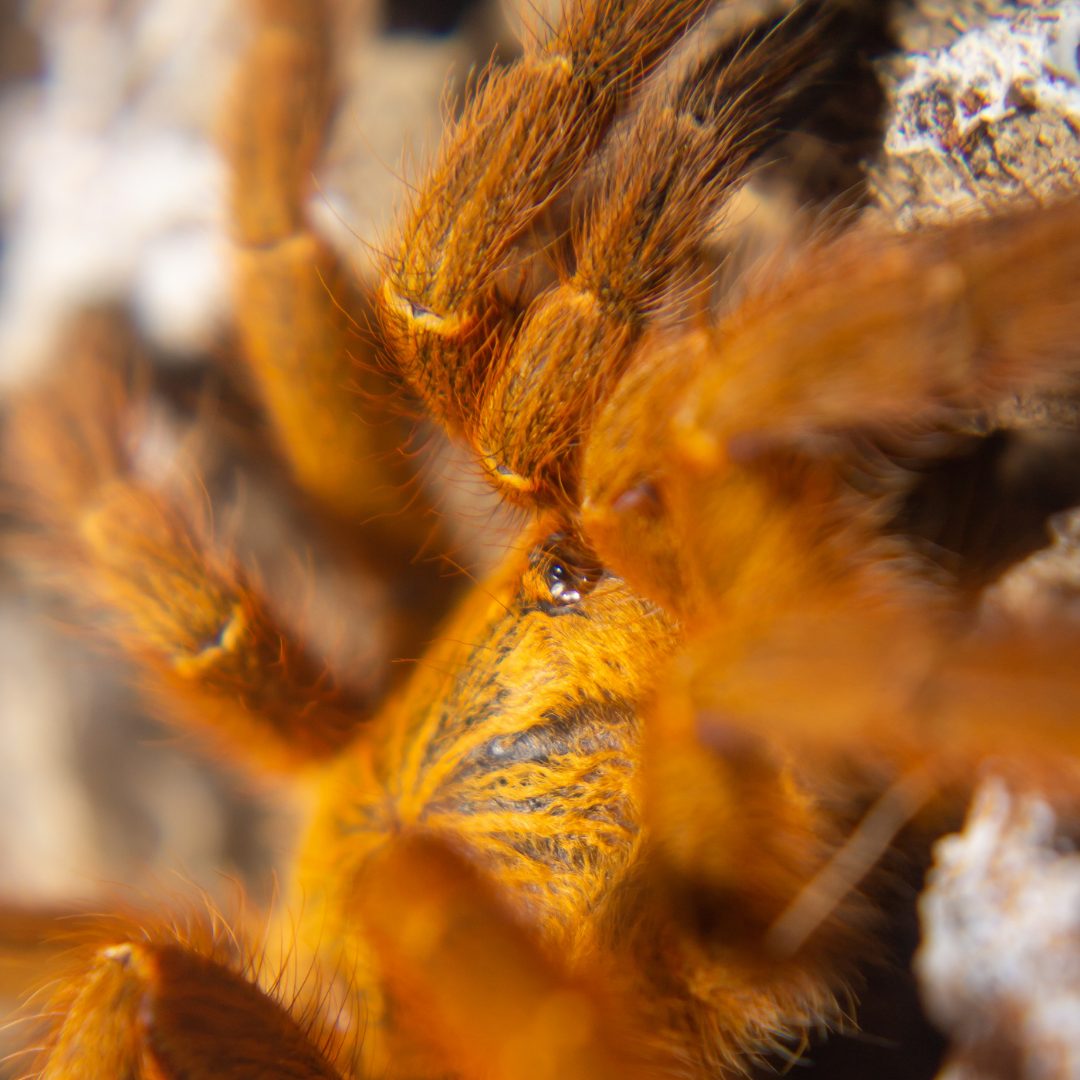Copyright 2021 Evolution Reptiles
All rights reserved.
Copyright 2025 Evolution Reptiles
All rights reserved.
All rights reserved.
The infamous orange baboon tarantula has a fearsome reputation, well earned through years of frightening keepers with its speed and short temper. A truly stunning species of tarantula, it is considered a must have by many tarantula enthusiasts due to its vivid orange colouration that spans its whole body. They are often referred to as the ‘OBT’ or ‘Orange Bitey Thing’, a name that really speaks for itself. Attaining a possible leg span of up to 15cm, this isn’t a small spider, but it should be respected as opposed to feared as is the case with all tarantulas.
The OBT has a huge range in Africa, with multiple localities which differ in appearance based on where they are found. The red colour form is the most commonly sold as a pet and this locality originates from the Usambara Mountains in Tanzania. In this region, temperatures are fairly consistent. The average temperature sits at 28ºC during February, the hottest month of the year, and 25ºC during the coldest month, which is August. Temperatures can occasionally reach 35ºC but these spiders will usually be tucked away in their burrows in order to escape harsher conditions. Humidity in the region is actually quite low, at around 50%-60% for most of the year but that rises during the rainy seasons from March to May and November to December. During these periods it will fluctuate but usually averages around 80%.

When keeping the orange baboon in captivity, glass or acrylic terrariums tend to be most suitable as they will cope best with any amount of moisture. The OBT is most often considered to be a terrestrial, burrowing spider but some individuals will frequently make the most of arboreal space when they are offered it. It is for this reason that we would recommend offering the tarantula the opportunity to exhibit both or either of these behaviours whenever possible. This is best achieved by offering an adult specimen an enclosure with a height of at least 45cm and a substrate depth of roughly 15cm (more where possible). The choice of substrate should be something that is capable of retaining moisture when you want it to while also being capable of holding a burrow should the spider choose to make one.
Being a terrestrial species, floor space is also important and we’d recommend offering an enclosure with a minimum width and depth of 30cm because of this. There should also be a variety of branches, plants and other natural objects furnishing the space. These will act as anchor points for any webbing the spider produces, of which there is normally a lot. They tend to make an excellent display species because of this. It’s recommended to offer an enclosure with multiple access points so that any damage to webbing and stress to the spider can be minimised. In regard to heating, the easiest method is to use a low powered heat mat on the outside of one wall of the chosen terraria. Any heat mats should be used with a suitable on/off thermostat in order to prevent overheating. The aim is to achieve a hot spot of 28ºC, with a gradient towards the other, cooler end.
This well known species is hardy and gets exposed to a variety of different conditions in nature. It’s a good idea to spray one side of the enclosure lightly, once or twice a fortnight, in the cool end. This will create a humidity gradient which will allow the spider to choose the ideal environment. They should also be checked frequently, fed once or twice weekly with a suitably sized food and worked with in a respectful manner. They will eat a large variety of invertebrates and the size of these should be upgraded as the spider grows, which it will do at a fast rate.
No explicitly valuable scientific research has been done into the effects of the venom possessed by this species but many keepers have been unfortunate enough to feel them. At first, the spider will try to flee in order to escape danger but, if persistently disturbed, they will stand and fight. This will consist of the spider raising its front four legs, displaying its fangs as a means of showing that they mean business. They will then ‘slap’ the ground with their legs and fangs to reinforce this message and eventually bite anything they consider a threat. Ultimately, it’s a good idea to use any tools that will allow you to keep a safe distance between your hands and the spider whenever you need to work with them. A deli cup, or something similar, to catch the spider in is your friend – we promise.
Copyright 2021 Evolution Reptiles
All rights reserved.